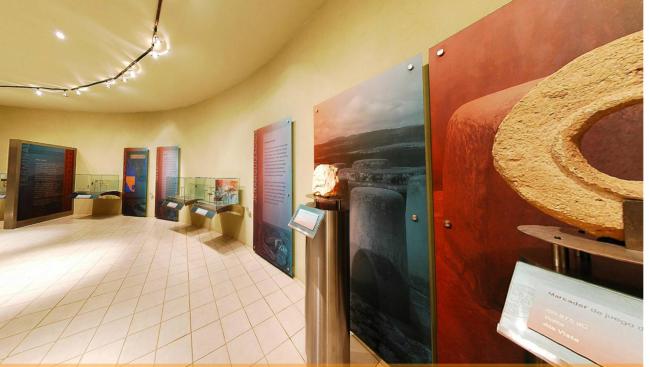
Terminal Phase
Sala
The final section of the museum addresses the decline of the Chalchihuites culture. After its cultural and demographic peak, the site ceased to participate in trade networks, contributing to the ceremonial center’s downfall. By the late 9th century, the ruling class had clearly lost control, leading to the site’s eventual abandonment around 950 CE. This led to population movements toward the Guadiana Valley in present-day Durango, marking the beginning of the late phase of the Chalchihuites culture (875–1400/1450), with new cultural exchange networks.
In this area, ceramic vessels and bowl fragments from Durango valleys are displayed.
The museum concludes with a discourse on cultural continuity, showing similarities between certain practices of the ancient inhabitants of Alta Vista and some traditions still maintained by present-day Huichol and Cora peoples of the Gran Nayar region. To illustrate this continuity, replicas of Huichol offerings are displayed, and a particularly significant item is a ceremonial goblet (550–875 CE) from an offering. Decorated using the pseudocloisonné ceramic technique, this piece portrays the moment when the sun (in the form of an eagle) devours the serpent to control the rains and ensure a beneficial harvest.


